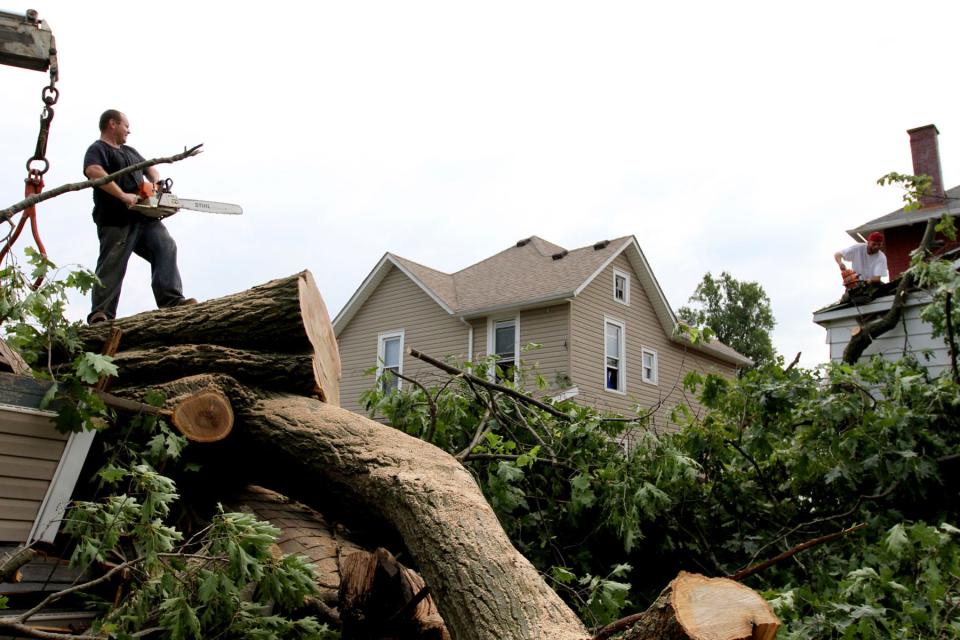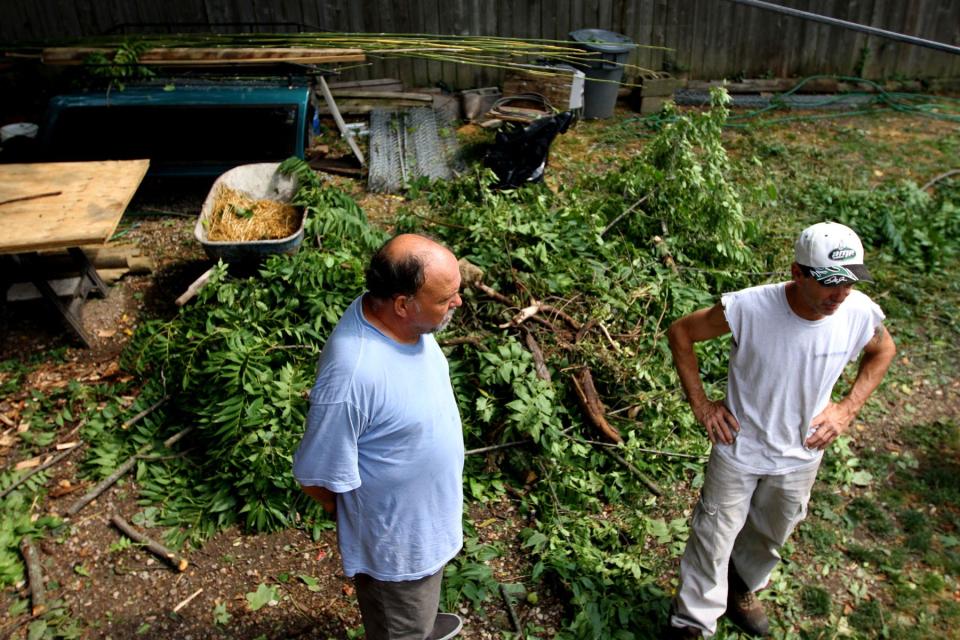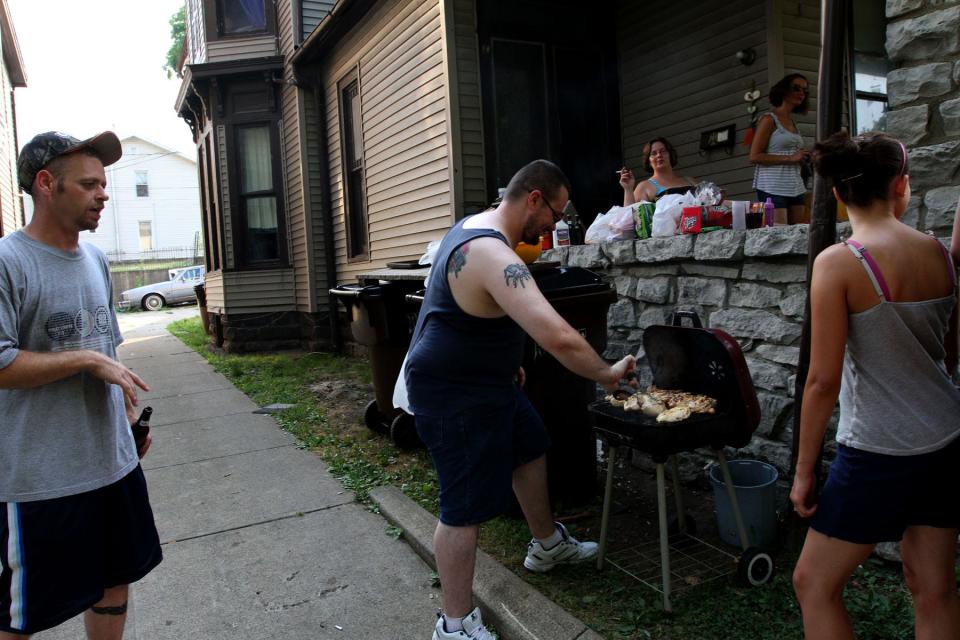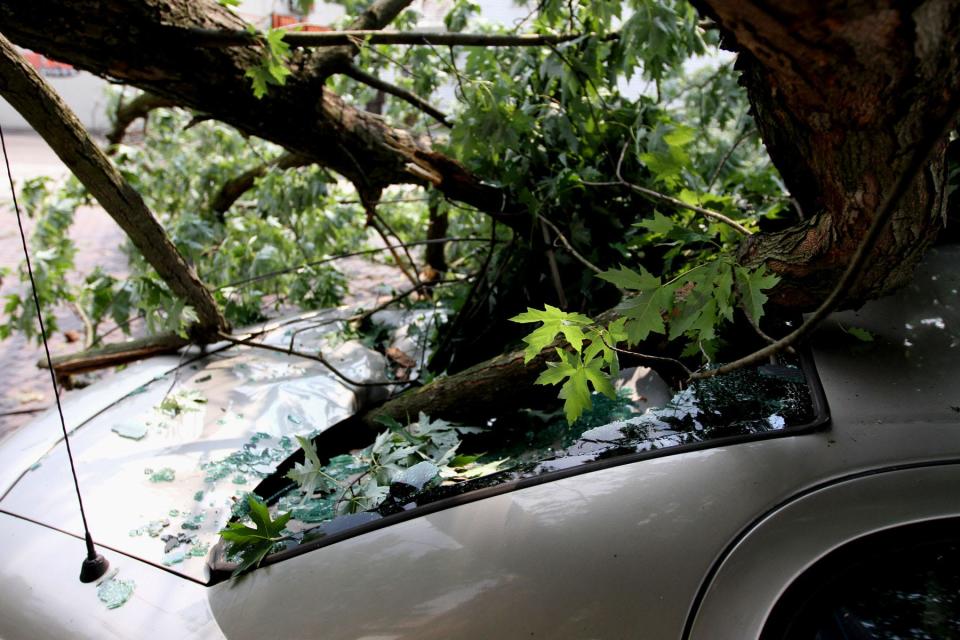Derecho 10 years later: Newark officials emphasize emergency preparedness
A decade after a derecho swept through central Ohio, leaving thousands without electricity for days, some Licking County officials say the weather event left a lasting impact.
According to a report from the National Weather Service, the derecho traveled 700 miles, impacting 10 states, including Ohio, and Washington, D.C. Wind gusts were recorded exceeding 80 mph and 13 people storm-wide were reported to have been killed by the extreme winds.
The agency estimated four million customers lost power for up to a week. The region impacted by the storm also suffered from a heat wave, which claimed 34 additional lives.
A 'catastrophic' storm
Licking County Sheriff Randy Thorp remembers leaving his home on the afternoon of June 29, 2012 to run an errand. He didn't make it one-quarter mile down the road when he returned to retrieve his uniform and head to work, having seen the storm damage nearby.

Despite having generators at the Licking County Justice Center, Thorp said they weren't enough to power air conditioner units. They had concerns about how they could sustain operations without power long-term.
Thorp said they bought industrial size fans, which were placed in inmate modules, took jail laundry to a place in operation in Zanesville, and one day, brought ice cream to the inmates and staff to help them cool down.
"I recall, it was one of those things where everybody realized this is serious. A lot of people just showed up, came to the office...Everybody came in and was working and pitching in to try to make things as good as we could, given the hand we were dealt," Thorp reflected. He added the public also stepped up. "It was catastrophic, to say the least, but it was one of those moments where a lot of people come together."
Mike Shearer, who was editor of The Advocate at the time, recalled being in his office when he saw a "wall of weather" approaching their area quickly. He said he thought the power was out at their office for 88 hours. At the time, The Advocate along with four other papers were printed at the Newark location.

"We had to quickly figure out how to get papers designed that night to print," Shearer said, adding their team sent designers to the Mansfield newspaper and the following day's paper was printed at The Columbus Dispatch.
Shearer said he vividly remembers Reporter Abbey Roy tweeting using the #NAstorm and retweeting pictures of road closures. He said their online traffic soared as the team used an article displaying live updates.
Shearer said it wasn't their first time producing a paper without power, mentioning Hurricane Ike and an ice storm that traveled through Licking County around Christmas in 2004.
"It was definitely the worst storm I've personally seen. The damage was extreme. It's not the kind of thing we expect to happen in Ohio," Shearer said.
He remembered running a column telling the story of how their team covered the storm and its aftermath and it was printed at The Dispatch. A reader wrote to him afterward, thanking them for their coverage and telling him they had no idea The Advocate was without power. It was something Shearer said he'll never forget.
Licking County Commissioner Tim Bubb estimated about 90% of the county lost power. Describing the storm as a "giant tidal wave of air," Bubb said it took out thousands of trees, leaving people in the dark for the next eight to nine days.
Bubb remembered their board called a news conference the following afternoon, inviting major utilities and service providers such as the Licking County Sheriff's Office and Licking County Emergency Management Agency to join. The news conferences were held in Licking County for the next week and a half, he said, and were broadcast live on the radio.

"It was sort of one of those classic examples where we had to go old school with people listening to car radios again...," Bubb said. "Then we went into a heat period...where we had weather like we recently had with 90 degrees and above. It became a situation where in some cases, it could be life and death."
During the next 10 days that followed, Bubb said cooling shelters were opened. He said two to three people died from heat-related stress in their homes.
"The cost was devastating," he said. In addition to the lives lost, people suffered from damage to their homes and property, and people also lost food in their freezers and refrigerators.
Lasting impacts
Ten years after the storm, Licking County leaders say the storm had an impact on the way organizations prepare for severe weather events.
Any large weather event, Licking County EMA Director Sean Grady said, has an impact on their agency because they're always learning to do better.
When their agency built the Licking County Regional Communications Center in Heath, Grady said they sought a third level of backup power, trying to keep 911 operational for as long as possible in the event of a power outage. He said that was a direct result of the derecho.
According to Thorp, their agency opted to upgrade their generators to ensure they would be able to maintain essential services through an extended power outage. The sheriff's office looked at other concerns and developed a plan for how to get through a similar weather event.
Bubb said the derecho absolutely had an impact on Licking County's planning efforts for severe weather.

"The lesson learned is you always need to be prepared for that," Bubb said, suggesting people have generators, keep a fuel supply on hand and non-perishable goods. "We've become complacent as people. It's important to remember emergency situations. ...We learned a hard lesson 10 years ago."
Grady said the 2012 derecho highlighted for the public, the need to be prepared for long-lasting power outages. The issue returned to the forefront recently when many lost power due to strong storms going through the central Ohio area and subsequent planned power outages to protect the grid.
"We're used to floods here and wind events. We're used to minor events. But the power goes out for six days - that tends to have an impact on your memory," he said. "People need to plan for the future. They need to be able to plan and be resilient to things. It makes our job easier, but it makes your life easier."

Grady said people should alternative plans, such as a place they can go if they must leave their home, a way to charge their phone in the event of a power outage, a radio to receive warnings and information. He also suggested people should have fuel for their generators.
For more information about disaster preparedness, Grady referred people to call their agency at 740-522-9034 or visit their Twitter page for resources.
This article originally appeared on Newark Advocate: Derecho 10 years later: Newark officials emphasize emergency preparedness

